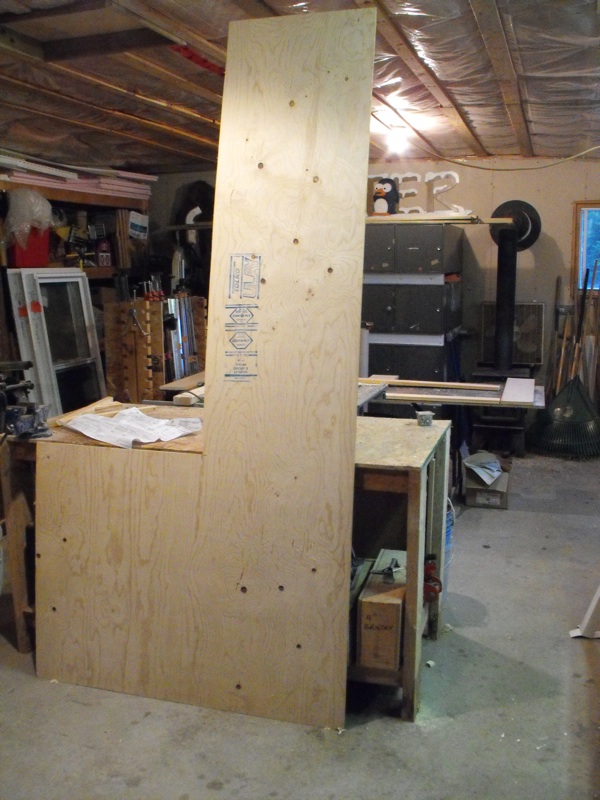Sliding Screen Door for the Garage

The attached garage is a place we use to store firewood during the winter. Usually we can keep about a cord at a time. For some time now I’ve wanted to have a screen door at the entrance to allow a cross breeze with the windows on the opposite side of the garage. It would help keep the humidity down, which is something I’ve noticed a lot this year.
So I present to you the nothing fancy sliding screen door.
The entrance is a 32 inch wide door. A typical hinged screen door won’t do because there’s no room for the door to swing open. So, a sliding door is necessary. My first thought was to use a pocket door kit but they can get expensive. So I went and looked at the sliding door kits used for closet doors. There were 2 sizes, a 4ft and a 6 ft kit. I figured 6ft was unnecessarily too wide, so the 4 ft would do. After all, the door is only 32 inches wide.
It was only on the drive home, thinking about installing it did I realize that I could run into a problem. The screen door will be 36 inches wide (to slide over the existing trim molding), and it needs to slide over about 36 inches. That 6ft kit sure would be handy right about now. But, I figured I could make do with what I had.
While not complicated to assemble as there are few parts, its a good idea to read the instructions because there are wheel parts for a 3/4 inch wide door, and wheel parts for a thicker door. Since I was using 3/4 pine to make the door, I needed to be sure I was using the right parts. So a test fit was necessary before starting on the door. After all, if the test fit doesn’t function right, there’s no need to make the door.
First was to install a board above the trim in order to have something to screw the channel onto. All I used was a scrap piece of pressure treated 1 inch thick board.

Next, I figured out on the workbench that half of the channel had to be positioned above the right trim molding. Then position the right end (what will be the right side of the door) at that mark. So now the board looks like it is positioned correctly as a door “in position”. With the board in position, I now know the maximum distance the left wheel can be in without falling off the track.

Then it was a matter of sliding the board to the other end to see where the right wheel would be positioned. As you can see, the wheels are equal distance from each other from the center point of the board.


It all seems to work ok. Time to make the door. I had 3 pine boards left over from the table project. They measured 1x6x72 inches. I knew I needed about 82 inches for the door and I needed 38 inches for the width (it was suppose to be 36 but I changed it to 38 to prevent the door from sliding off the track). So I cut 2 pcs of 38 inch long boards for the top and bottom. I then ripped the final board right up the middle and used them for the sides of the door. A piece left over was cut to be the center board.

As you can see from above, the pine boards are butt joints. Probably the weakest joint there is, especially for a door. So I chose to reinforce the inside face of the door with 1/4 inch plywood (left over from some long ago project).

No real science to this. I simply cut the long part of the plywood, it turned out to be 21 x 96 inches. I then ripped it in half, to use one for each side.

After a quick measure, I stacked the 2 pieces of plywood to cut them both at the same time. Then got busy making some sawdust.

This is being made on the fly, but I’m always thinking down the road a bit when it comes to such projects. I knew I was going to make some screen frames and I was going to just screw them in place, but on second thought, I made an adjustment to allow the insertion of screen panels. That means cutting it a little different.

I attached the plywood pieces with #8 x 3/4 inch wood screws and glue, also being careful to make sure its square.


It took one more trip back to the garage to trim a little bit off the bottom of the door but other than that, the door is in place and slides smoothly back and forth. Just a few more things to do, like screens, a hook to keep the door closed when needed, and a handle to slide it back and forth. The handle will also act as a door stop to prevent the door from sliding off its track when opened.


